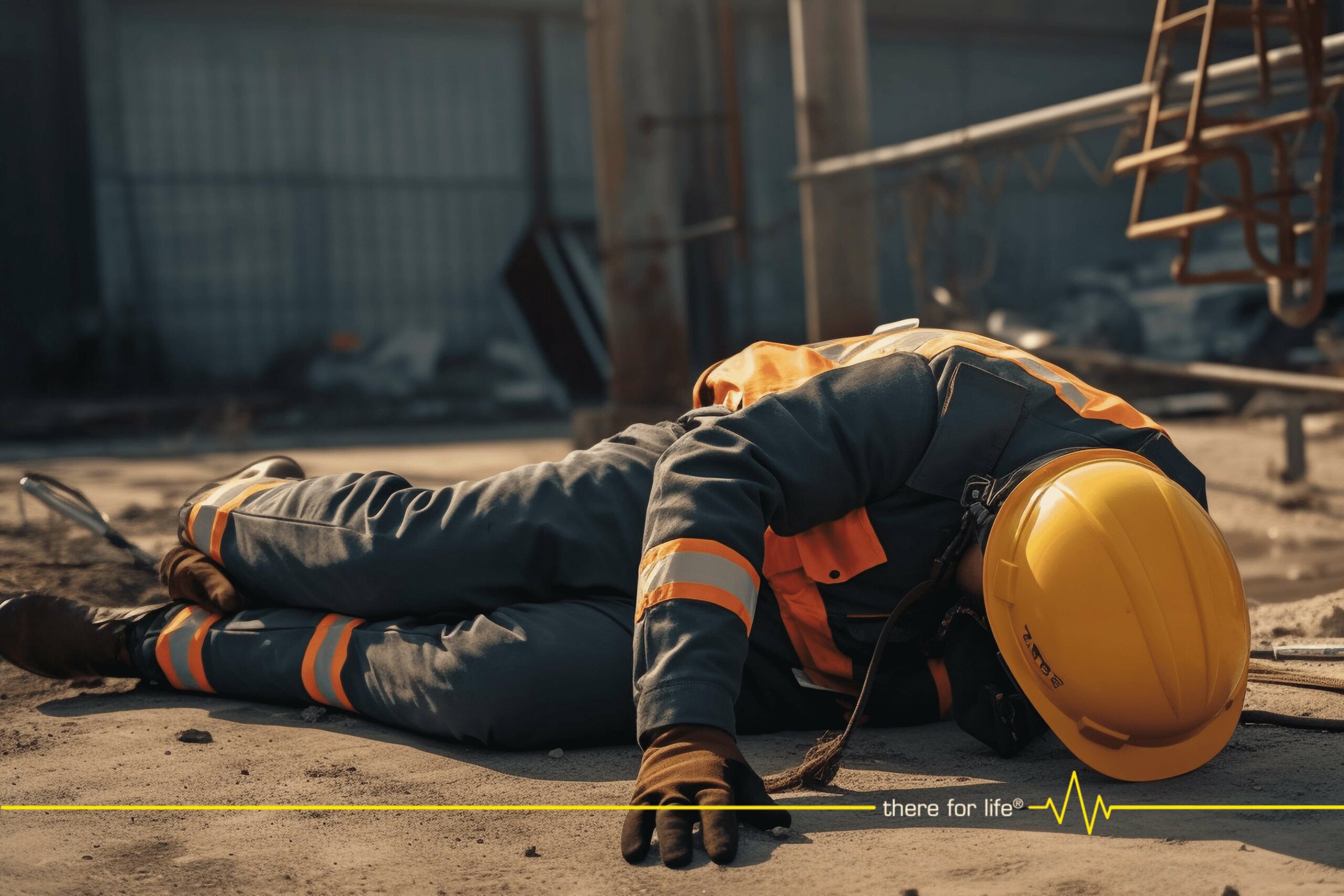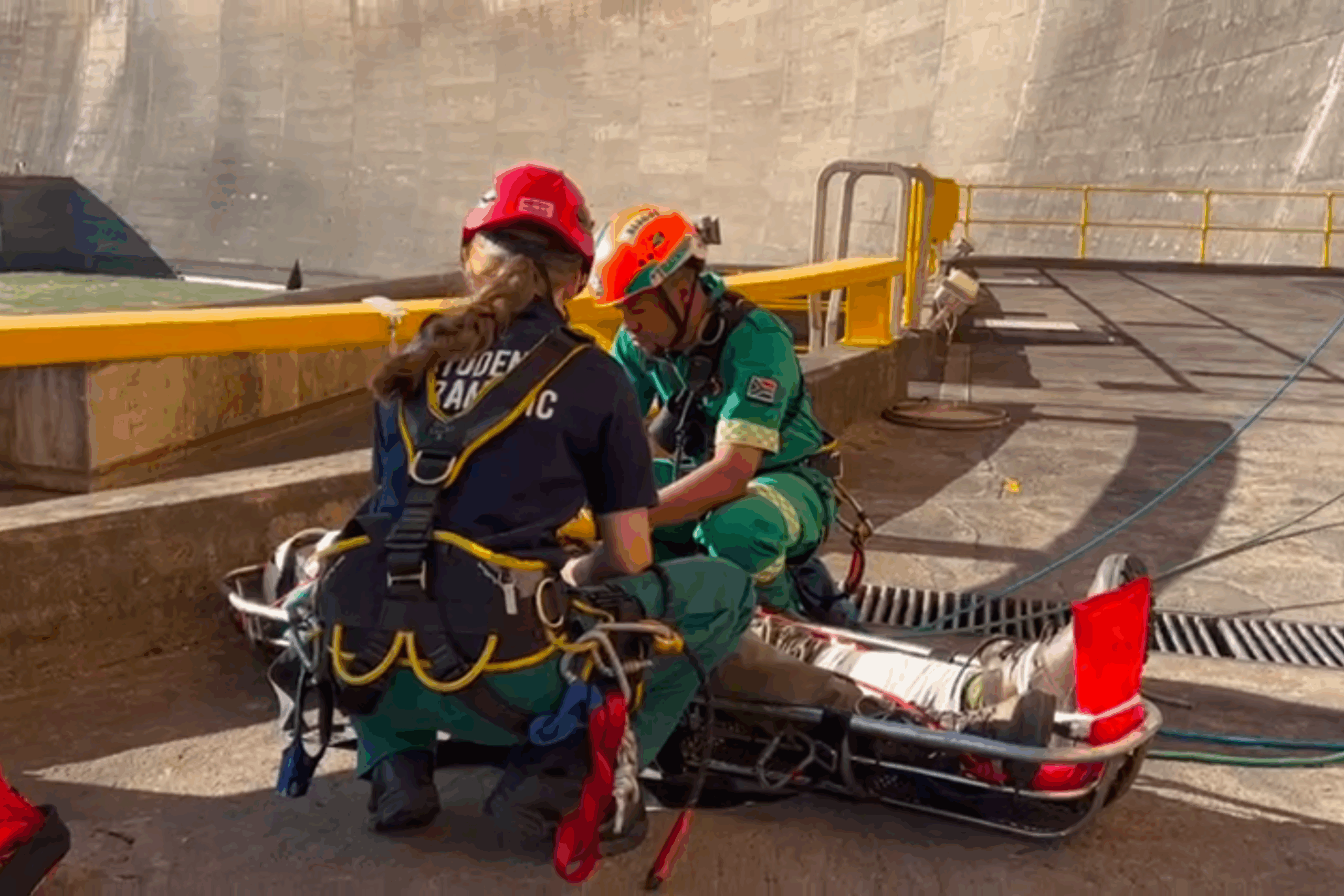A construction site is a high-risk environment which is often considered to be hazardous. For this reason, organisations must ensure that they meet their duty of care requirements and provide effective emergency medical services to workers in the case of an accident, injury or illness. By being fully prepared for medical emergencies, organisations not only protect employees and minimise risks, but they can protect themselves from economic losses related to absenteeism and loss of productivity due to workers being off work due to a medical emergency. In the blog below, we unpack the medical emergency service requirements necessary for construction sites.

Navigating the Risk of a Medical Emergency on Construction Sites
Construction work is often considered high-risk due to factors contributing to the potential for accidents and injuries. Some of the critical reasons for the high-risk nature of construction work include:
- Physical hazards: Construction sites are filled with various physical hazards such as heavy machinery, power tools, electrical wiring, sharp objects, heights, and confined spaces. These hazards increase the likelihood of accidents, falls, and injuries.
- Complexity: Construction projects involve complex tasks that require coordination between multiple workers, subcontractors, and equipment. The complexity of these tasks increases the chances of errors and miscommunication that could lead to accidents.
- Heavy machinery: Construction sites rely heavily on cranes, bulldozers, and excavators. The operation of these machines requires skilled operators, and any errors can result in severe accidents.
- Working at heights: Many construction tasks involve working at elevated heights, whether on scaffolding, ladders, or rooftops. Falls from heights are a significant cause of construction-related injuries and fatalities.
- Confined spaces: Working in confined spaces, such as tunnels or trenches, presents risks of asphyxiation, entrapment, and other hazards due to limited entry and exit points.
- Hazardous materials: Construction sites often use hazardous materials like chemicals, solvents, and asbestos. Improper handling, storage, or disposal of these materials can result in health risks to workers and the environment.
Understanding the Legal Obligations and Responsibilities
From the above, it is clear that several hazards make working on a construction site dangerous for workers. With this being such a high-risk environment, there are several legal requirements related to medical preparedness that must be met from a legal perspective. It must be noted that these requirements differ based on the jurisdiction or country in which the project is based. Legal requirements often include the following components:
- Medical personnel – Depending on the scale of the construction project and the site’s remoteness, regulations might mandate having medical personnel present with varying skill levels. This could range from a designated doctor to having a nurse or paramedic on-site.
- Emergency response plan – Construction sites should have a detailed emergency response plan that outlines the steps to be taken in case of accidents, injuries, or other medical emergencies.
- Evacuation plan – In a severe injury or medical emergency, an effective Medical Evacuation Response Plan (MERP) in place. This plan should consider the transportation of the injured person to a specialist medical facility, depending on their medical needs.
- Preventative Occupational Health plans – Construction sites are generally subject to health regulations that mandate certain precautions to prevent accidents and injuries. These precautions often relate to having a preventative Occupational Health plan in place that contributes to medical preparedness by reducing the likelihood of emergencies through worker education programs, regular medical screenings, etc.
- Medical facilities – Depending on the remoteness of the project site, there may be a need to set up remote temporary or semi-temporary medical infrastructure. This can include anything from medical rooms and operating rooms to ICU. The medical infrastructure required will depend on the medical services needed on-site.
- Training of medical and rescue personnel – Medical and rescue personnel must have the correct training, certifications and work experience to work in this high-risk environment. If medical personnel do not have the training required, they cannot provide the effective and accurate medical care and treatment needed for an accident, injury or illness on-site.
- Access to medical and rescue equipment – High-quality medical equipment is necessary for emergency and rescue services on-site. This equipment is vital to the successful and fast treatment of patients in an emergency.
From the above, it is clear that there are a number of components that an organisation must meet to comply with the legal obligations and regulations around emergency medical services on construction sites. The question that needs to be answered is, “How does an organisation meet these requirements and ensure legal compliance?”. The answer lies in developing an effective Medical Emergency Response Plan (MERP).
Developing an Effective Medical Emergency Response Plan (MERP)
A Medical Emergency Response Plan (MERP) is vital to safeguarding the health and well-being of workers on construction sites. This detailed plan aims to minimise the impact of emergencies and ensure compliance with local and international regulations. Several different elements are required for an effective MERP. From an ATA International point of view, these include the following steps:
- Surveillance Audit – During the surveillance audit, the ATA International team will obtain a complete and extensive overview of the project, which will assist in identifying the on-site medical needs and requirements for the project.
- Complete Healthcare Management Plan and Strategy – Once the audit has been completed, the ATA International team will identify all the medical, emergency and occupational health-related risks and the services required to mitigate these risks.
- Procurement and Implementation of The Strategy – Once the design and plan are approved, ATA International will assist in procuring and implementing all medical, emergency and occupational health services. This includes the procurement of medical equipment, the sourcing of medical personnel, the development of on-site medical clinic facilities, the training of medical and rescue personnel, evacuation plans and more.
- Ongoing Support and Training – Once all medical, emergency and occupational health services are in place, ATA International will provide ongoing support and advice to ensure that the medical service needs and requirements are met.
For a MERP to be successful, it needs to be based on the unique needs of the construction site, as all sites are different and have different requirements. With this plan in place, organisations can ensure that they meet their duty of care requirements and work towards zero harm to workers on-site.
Conclusion
Within a construction site being such a high-risk environment, organisations are required to ensure that the site is prepared for any medical emergencies. Organisations must have MERP in place to ensure that the right medical personnel and medical emergency infrastructure are in place in the case of an accident, injury or illness. ATA International has years of industry experience in assisting organisations within the construction industry with being fully prepared for any medical emergencies on-site. Follow the link to enquire about ATA International’s unique MERP solutions and how we can assist you in meeting your duty of care requirements. Visit: https://ata-international.com/contact-us/


